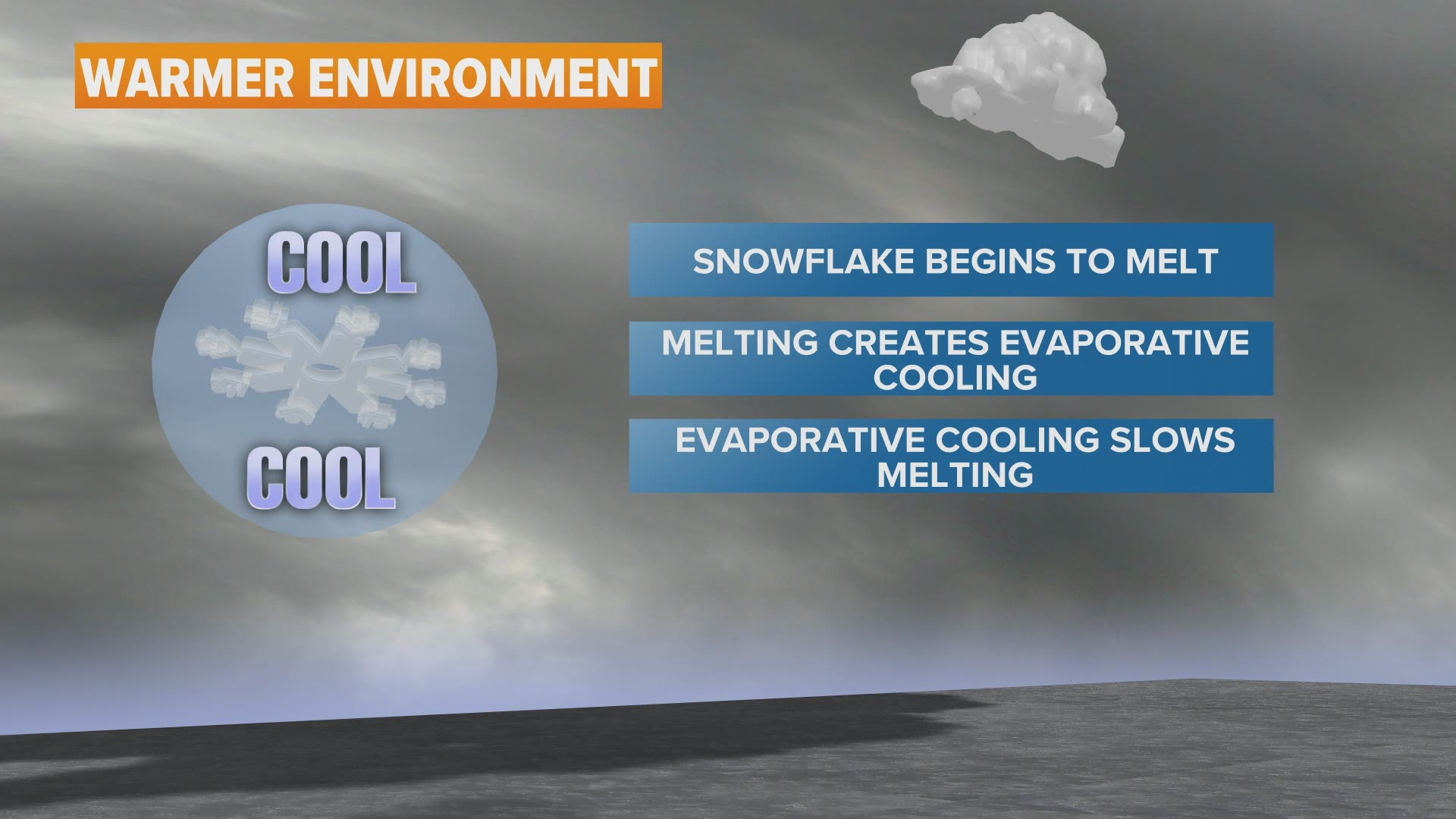DES MOINES, Iowa — Common sense tells us it rains when temperatures are above freezing and snows when temperatures are below freezing. That is not always the case, though.
It always snows when temperatures from ground level to cloud level are below freezing. Things get more complicated when temperatures in the lowest levels of the atmosphere climb above freezing.
In the warmer environment, a snowflake stays frozen until it reaches the warm layer near the surface. At that point, the snowflake begins to melt.
Here is the catch: the melting process leads to evaporation. Evaporation is a cooling process.
Therefore, the air immediately surrounding the snowflake cools. This in return slows down the melting process.
If conditions are just right, a wet snowflake will survive the trip to the ground.
More "Local 5 Weather Lab" segments
Evaporative cooling is more effective in drier air. Typically, dew points 5-10° lower than the air temperature do the trick.
The depth of the warm layer is crucial as well. A snowflake has a better chance of survival if the freezing line is 500' above the ground as opposed to 5,000' above ground level.
Generally, snow will not reach the ground if surface temperatures are greater than 40°. However, there are rare instances when it can snow in temperatures as warm as 45°.

